What is a 1031 Exchange?
What is a 1031 exchange and who should be interested?
If you own an investment property and are not a fan of paying additional taxes, the 1031 exchange could be a strategy for you. 1031 exchanges are named for Section 1031 of U.S. Internal Revenue Code that allows real estate investors to defer paying taxes from the sale of their investment property. It is important to realize this does not make the sale tax-free. It makes it a tax deferral and a 1031 exchange can be tricky to implement. There are a few caveats and moving parts when applying the 1031 exchange, so it is important to go through all the proper steps to avoid any future issues.
Where the Funds are Held
First, the proceeds from the sale of the property will need to be held by a qualified intermediary and not the individual person. There are many companies that specialize in 1031 exchange transactions. How then are the actual capital gains calculated? While your primary home will have either $250,000 (if single) or $500,000 (if married) exempt from capital gains taxes, this does not apply to investment properties. The amount taxable would be calculated on a net adjusted basis. This is the original price paid for the property plus improvements minus depreciation. Also, the new property must be a “like kind property.” This term is used broadly and does not necessarily mean similar properties.
When are Funds Identified?
After funds are in the intermediary, the future investment property or properties must be identified within 45 days of sale. Also, the new property transaction must be fully completed within day 180. If there is additional cash from the replacement, it is known as “boot” and this can be taxed as gains. This can also apply to new loans if the new loan is less than the original one, which can cause the new property to be valued as less.
Tax Cuts and Job Act (TCJA)
After the passage of the new Tax Cuts and Jobs Act (TCJA) under the Trump administration in 2017, some exchanges of property like licenses, aircraft, and equipment are no longer eligible for a 1031 and must now be only real property. However, having a property in mind and wanting to continue with investment management may not be the only scenario where these tax programs can apply. What also came about from the TCJA was the creation of what is known as “qualified opportunity zones.” The program was created to provide for the revitalization of certain areas through the reinvestment of capital gains into low-income neighborhoods. These investments build up those areas by incentivizing investments from investors for the deferral of previous capital gains. There are various companies that manage these funds and you would need to complete your due diligence to find one who fits your needs. The way they work is that the investor is able to defer recognizing the original gain until December 31, 2026, and receive at least a 10% reduction in gain from tax liability if held for at least 5 years, and up to 15% if held for 7 years. The investment also has tax-free appreciation in QOF if held for at least 10 years. There are many ways these gains can be invested through these various fund companies, as long as it is done within 180 days of the initial capital gains transaction.
1031 exchanges and opportunity zone investing are just a few of the many ways you can help reduce your tax liability throughout the year and efficiently provide proactive planning. If you are interested in learning more, please reach out to us at 678-905-4450 or schedule an appointment online by going to wiserinvestor.com/contact-us.
Matthews Barnett, CFP®, ChFC®, CLU®
Financial Planning Specialist
Share This Story, Choose Your Platform!
Wiser Wealth Management, Inc (“Wiser Wealth”) is a registered investment adviser with the U.S. Securities and Exchange Commission (SEC). As a registered investment adviser, Wiser Wealth and its employees are subject to various rules, filings, and requirements. You can visit the SEC’s website here to obtain further information on our firm or investment adviser’s registration.
Wiser Wealth’s website provides general information regarding our business along with access to additional investment related information, various financial calculators, and external / third party links. Material presented on this website is believed to be from reliable sources and is meant for informational purposes only. Wiser Wealth does not endorse or accept responsibility for the content of any third-party website and is not affiliated with any third-party website or social media page. Wiser Wealth does not expressly or implicitly adopt or endorse any of the expressions, opinions or content posted by third party websites or on social media pages. While Wiser Wealth uses reasonable efforts to obtain information from sources it believes to be reliable, we make no representation that the information or opinions contained in our publications are accurate, reliable, or complete.
To the extent that you utilize any financial calculators or links in our website, you acknowledge and understand that the information provided to you should not be construed as personal investment advice from Wiser Wealth or any of its investment professionals. Advice provided by Wiser Wealth is given only within the context of our contractual agreement with the client. Wiser Wealth does not offer legal, accounting or tax advice. Consult your own attorney, accountant, and other professionals for these services.





